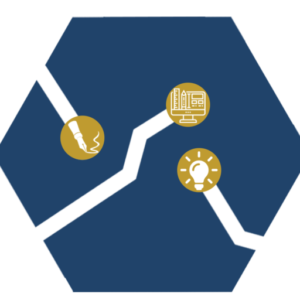Microlearning is a teaching method that delivers information in small, frequent chunks (aka “micro units”), typically under 10 minutes long but can be as short as a minute. Instead of traditional long-form training sessions, microlearning breaks down information into short, individual units. These bite-sized learning units are designed to address specific learning objectives or provide targeted information on a particular topic. They can be designed using a mix of elements, such as video, audio, text, and infographics. This approach is particularly well-suited for on-the-job training, continuous learning, and addressing specific learning needs efficiently.
Benefits of microlearning
Accessibility and flexibility
 Engagement
Engagement
The concise and focused nature of microlearning helps maintain learner engagement by avoiding information overload. Bite-sized content is often more engaging, catering to shorter attention spans. Learners are less likely to feel overwhelmed, so they tend to retain information better. The user also has to physically engage with the training (clicking, dragging, etc.), which also helps with information processing. Even if watching several micro units in a row, the learner is likely to pay more attention than in one long training.
Cost-effective and efficient
The short duration of microlearning modules allows learners to acquire specific information or skills without investing a significant amount of time. Do you already use various types of media for your training sessions? You can repurpose much of it in microlearning. Creating eLearning courses from scratch is great for your training but can make a dent in your budget. However, repurposing some of your current training into your new microlearning modules will save money and time. Microlearning also allows for easier updates and edits. According to learning expert Ray Jimenez, microlearning courses can be created in 300 percent less time and at 50 percent less cost than traditional eLearning courses. Learners tend to complete microlearning courses much faster than traditional courses. Since they spend less time on training they can get back to work more quickly — with more knowledge. Creating and updating microlearning content can be more cost-effective than developing lengthy training programs. It allows for quicker development and adaptation to changing information or requirements.
Final Thoughts
The benefits of microlearning are undeniably transformative in the realm of education and professional development. In a world of rapid technological advancements and evolving learning needs, microlearning provides the flexibility modern organizations need to keep their team’s skills current. Moreover, the data-driven nature of microlearning enables companies to track progress, identify gaps, and tailor content to meet specific needs. This not only enhances the overall learning experience but also ensures that the investment in training yields tangible results in terms of improved skills, increased productivity, and enhanced job performance. Assess your organization’s specific training needs and the characteristics of your learners to determine the most suitable application of microlearning for your training programs.
Resources
“Benefits of Mobile Learning. Lynda.com. Accessed 11/21/23. https://cdn.lynda.com/cms/asset/text/lyndacom-whitepaper-mobile-learning-benefits-20151245042329.pdf
“What is Microlearning — and What are its Advantages?” Beaconlive.com. Accessed 11/22/23. https://www.beaconlive.com/blog/microlearning-benefits



